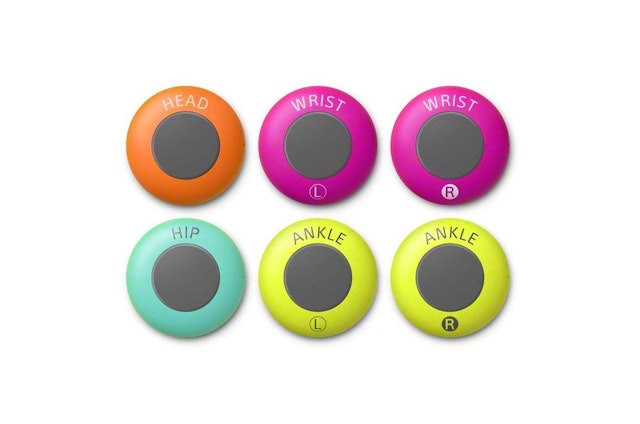Sony grooves into the metaverse with a wearable motion-tracking device
The device includes six small components worn on different parts of the user’s body.

Sony’s Mocopi device will be available starting in January 2023 for around $358 / Sony
Japanese consumer electronics giant Sony has announced the upcoming release of a wearable motion-tracking device, which captures the wearer’s movements and translates them on to a virtual avatar.
The device, called ‘Mocopi,’ comes in the form of six separate, disk-shaped gadgets, each of which slightly resembles a shuffleboard puck and is designed to be attached via straps to different points on the wearer’s body: one on each ankle, one on each wrist, one on the head and one (labeled ‘hip’) that sits just above the tailbone. Each of the six disks appears to be approximately the size of a wristwatch face.
A video released by Sony early this morning demonstrates how the Mocopi device is supposed to work: we see a man dancing at home and a woman dancing out in public, each wearing the device, which is converting their movements into those of a classic anime-style virtual avatar. (The avatar, somewhat confusingly, is the same for both the man and the woman.) The anime avatar is seen exercising with two flesh-and-blood men in the park, bounding across a street and a bridge, and embarking on other merry adventures.
Sony announced in a statement this morning that the device, which is being priced at around $358 (49,500 yen), captures the wearer’s movements “with only a small and lightweight sensor.” Those movements are then mimicked by virtual avatars, which can be accessed via a mobile app.

Motion-capture technology per se is nothing new. Modern filmmakers, for example, often rely on the technology to turn actors’ movements into those of digitally-rendered characters. The concept behind the tech in the context of the metaverse will also be familiar to anyone who has read or watched Ready Player One.
The ability to effectively capture someone’s physical movements and translate them to a virtual avatar has become a much sought-after goal for Meta, the company that to many laypeople is more or less synonymous with the metaverse. Meta unveiled its new virtual reality (VR) headset, the Quest Pro, in October. Though it comes with handheld controls that are certainly an upgrade to those of its predecessor, the Quest 2, motion-tracking capabilities are still limited to the upper body. During the company’s most recent Connect conference, at which the Quest Pro was revealed, Meta founder and chief executive Mark Zuckerberg announced via avatar that virtual legs would soon be coming to Meta’s VR ecosystem; though he made the announcement with much fanfare, it was subsequently widely mocked on social media.
Advertisement
Sony has already proven to be bullish on the metaverse. Back in February, the brand released a pair of headphones, which were positioned as a tool that could help customers (especially gen Zers) more seamlessly connect their physical and virtual experiences. Then, in April, the brand injected $1bn into Epic Games, creator of Fortnite, which Epic said in a statement would be put towards “[advancing] the company’s vision to build the metaverse and support its continued growth.” Sony-owned brand PlayStation also announced the upcoming release of its second VR headset earlier this month.
The new Mocopi device is slated to be released for preorder sales in mid-December. The official release is set for late January.
For more, sign up for The Drum’s Inside the Metaverse weekly newsletter here.

